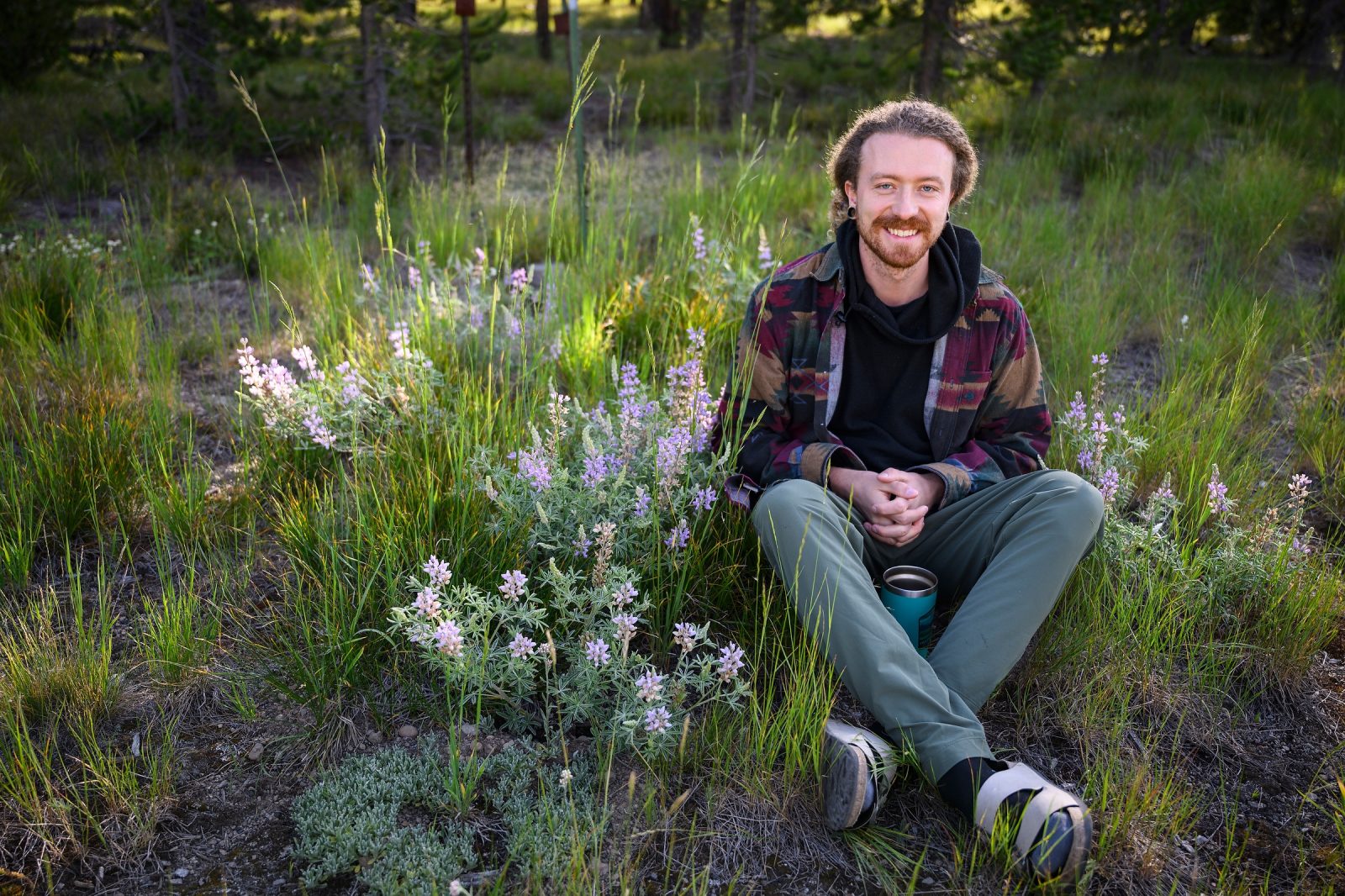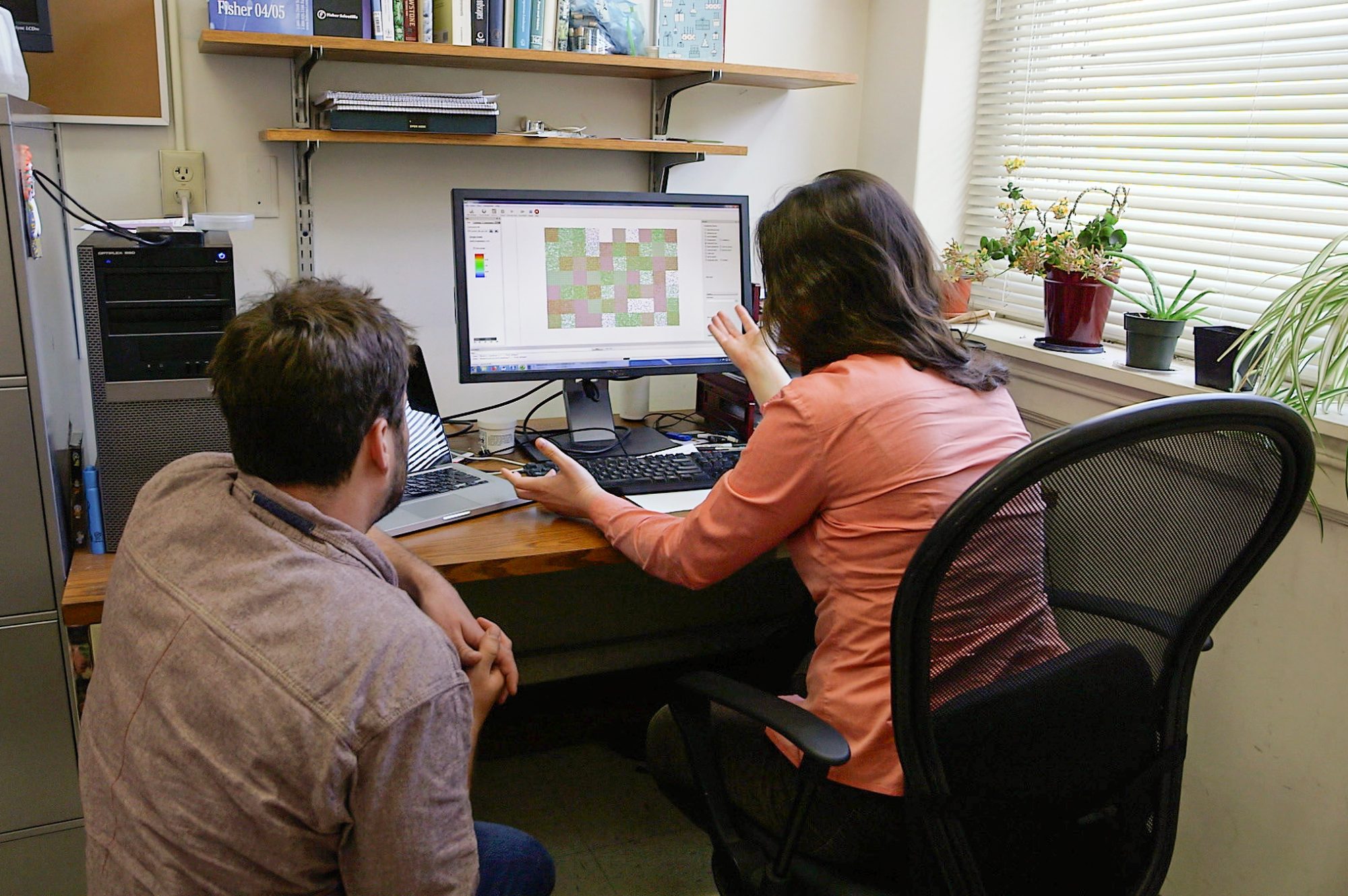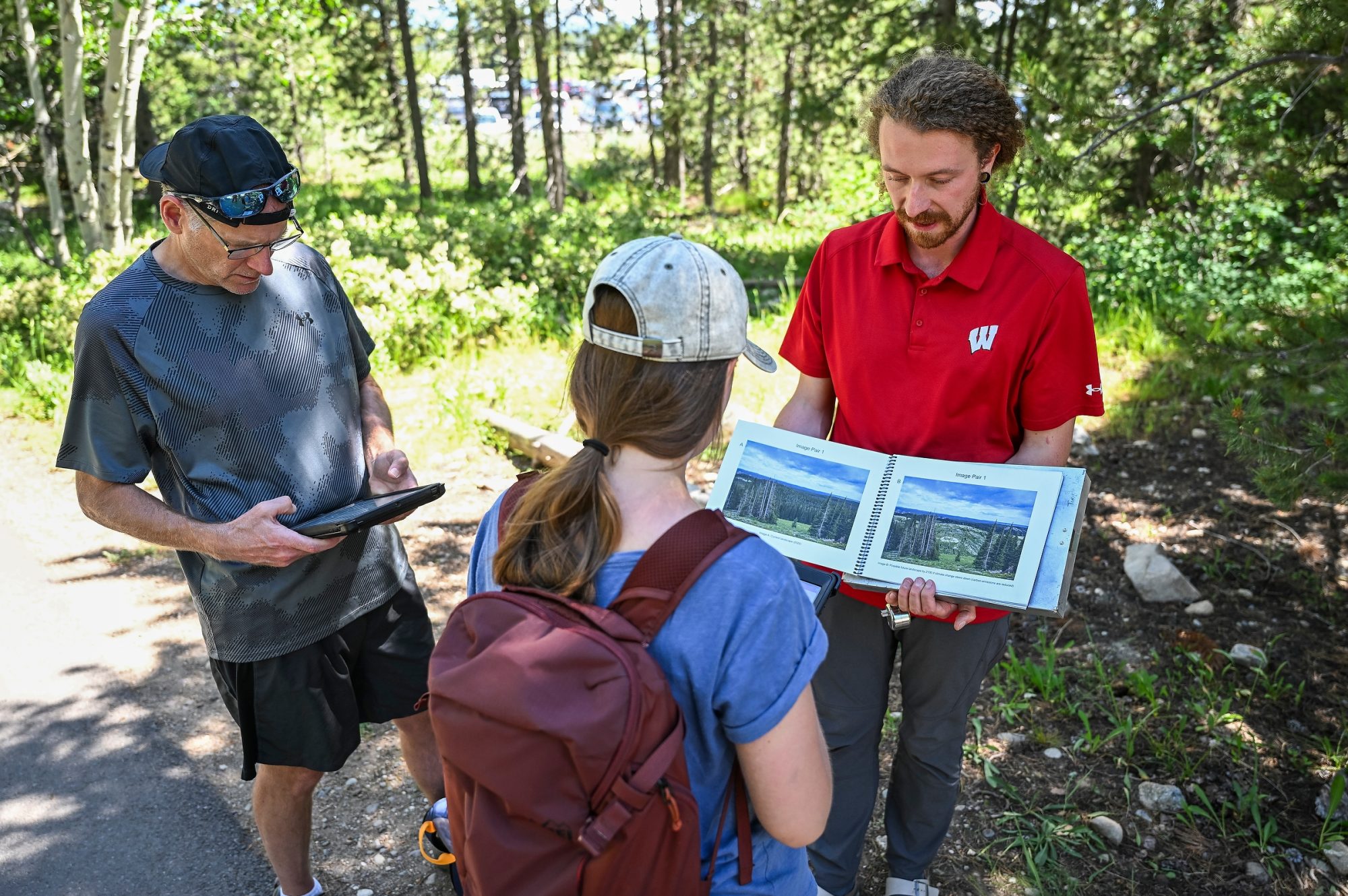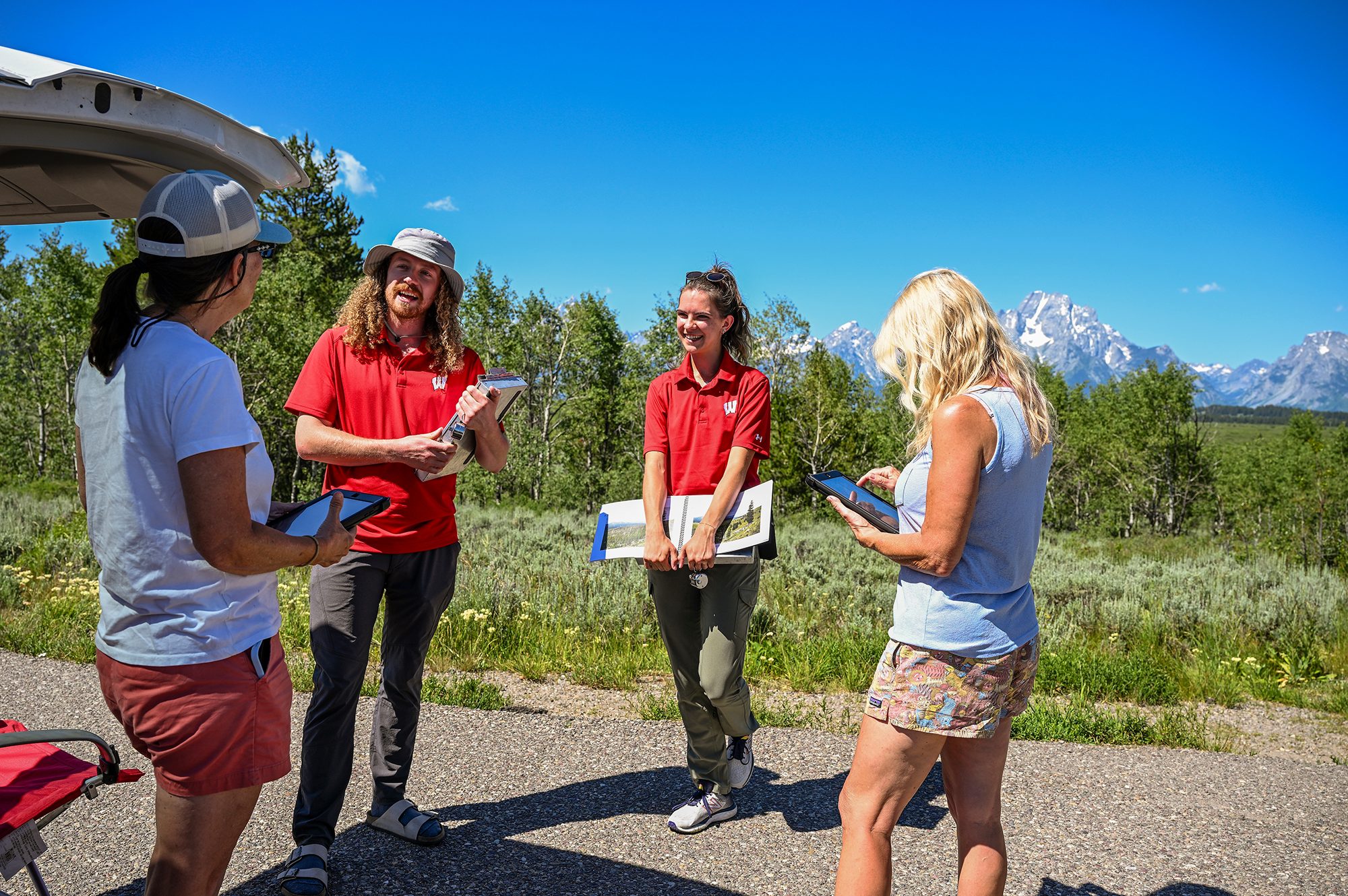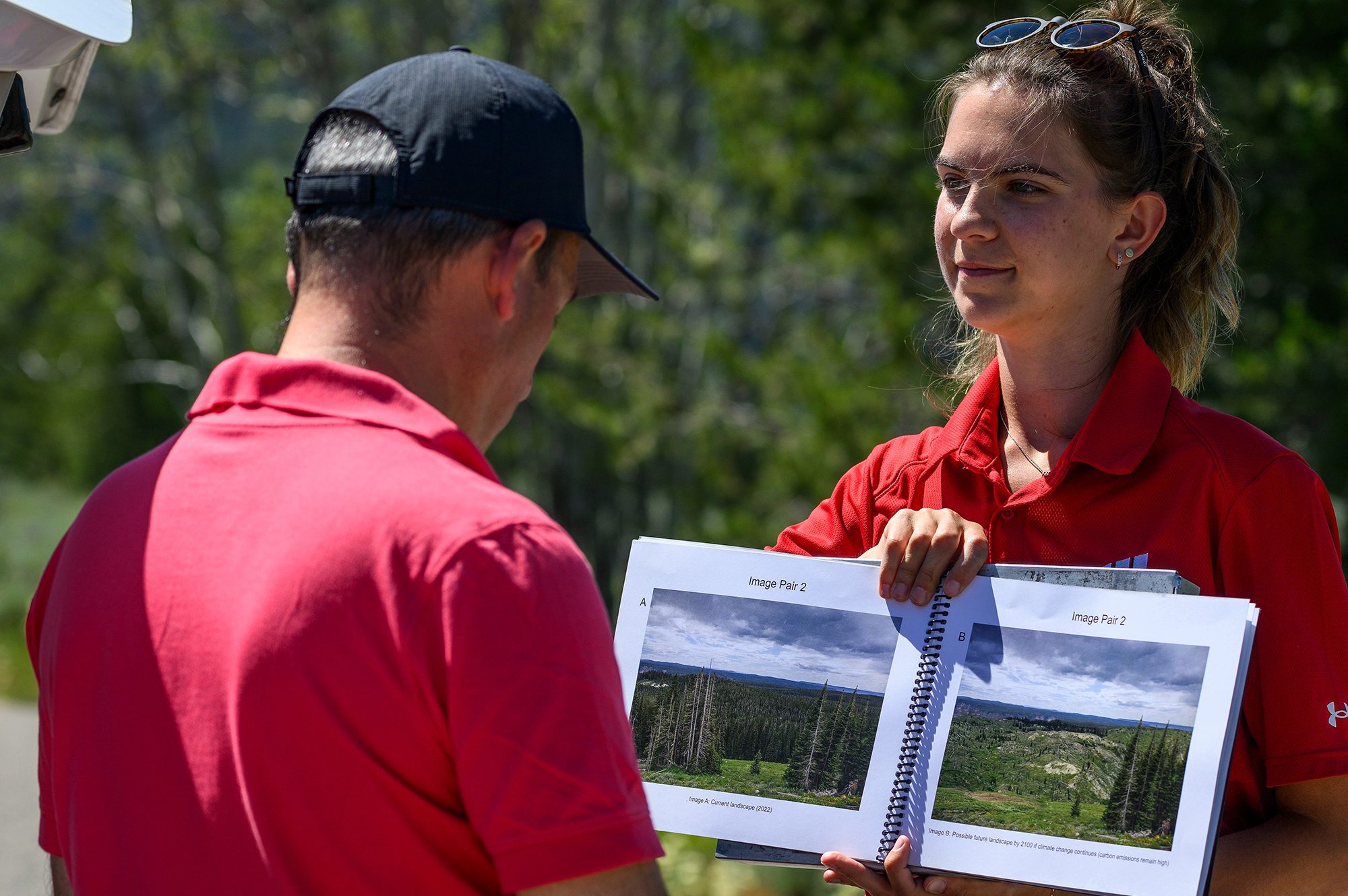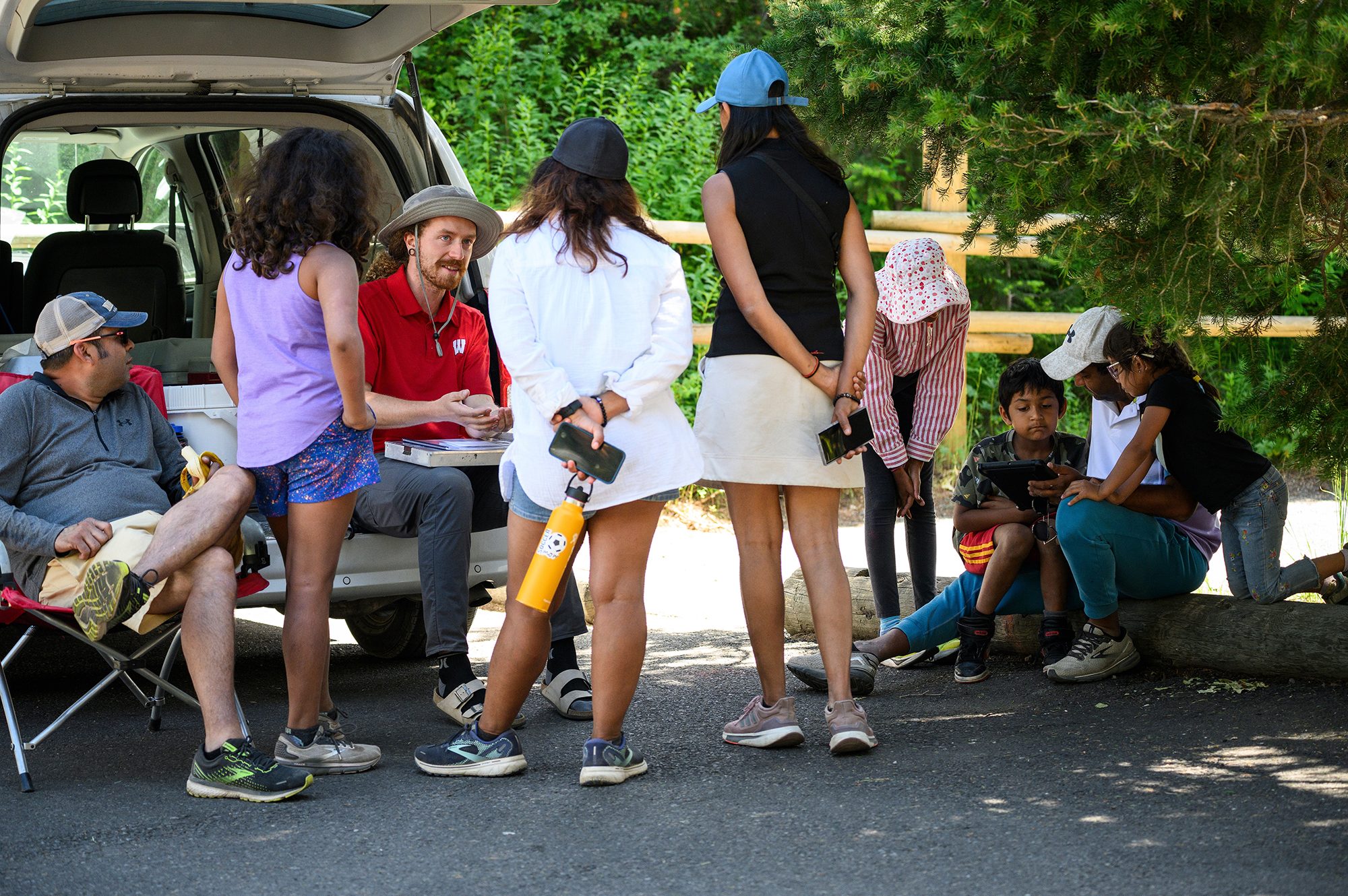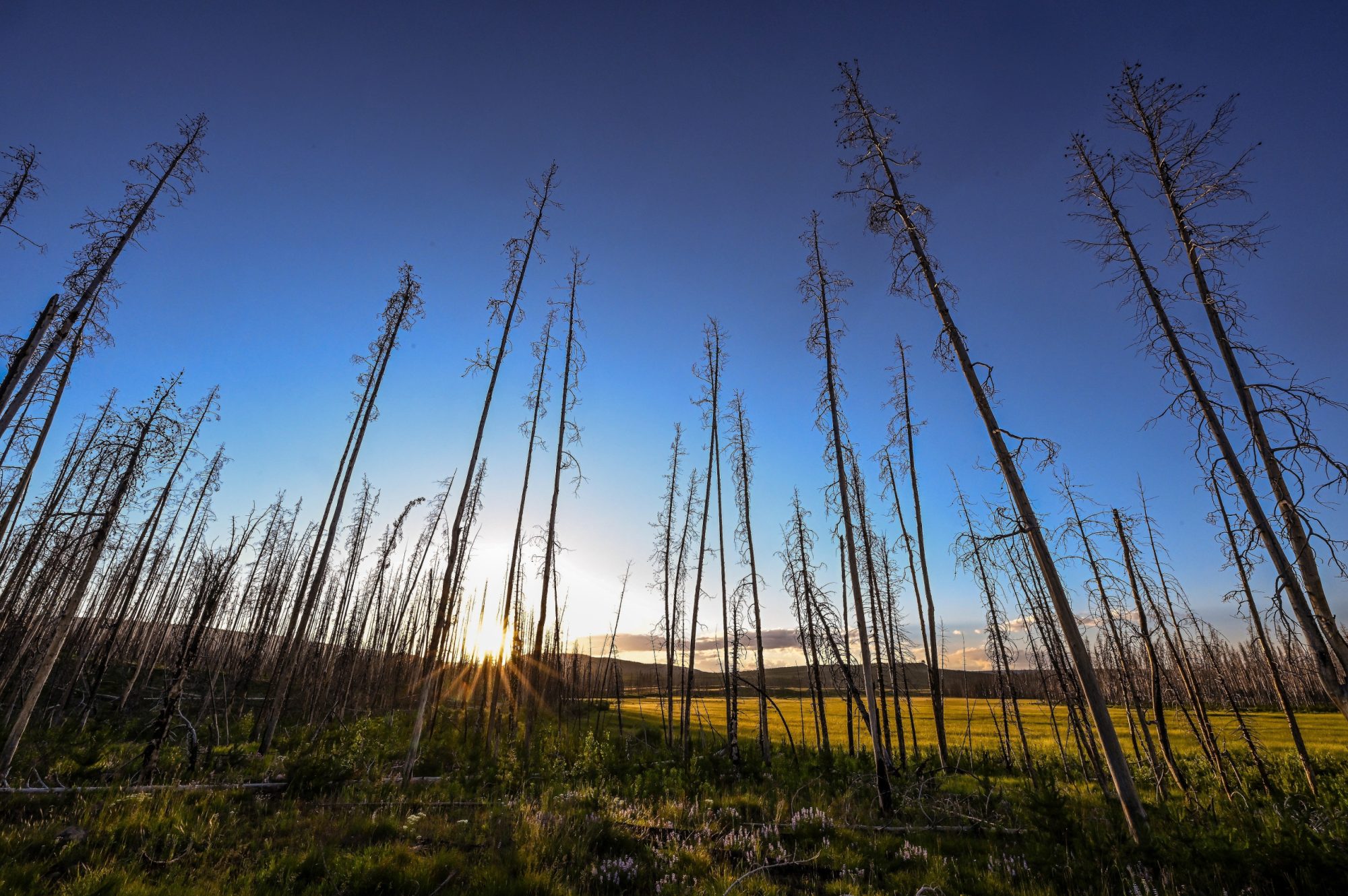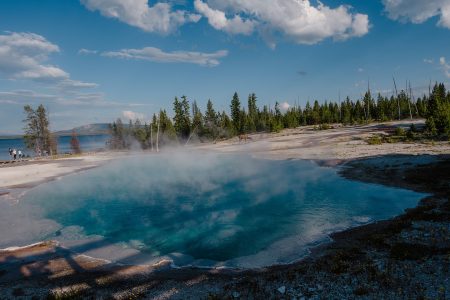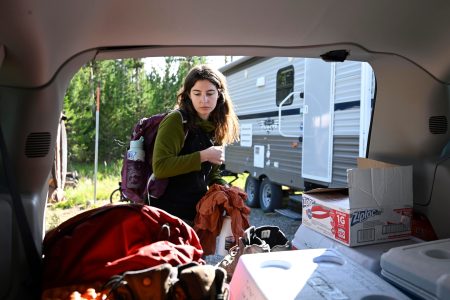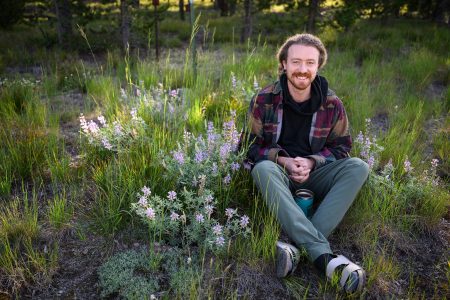The projected landscape photos Timon uses in the survey are based on computer models developed by Turner’s collaborator, Rupert Seidl. Turner and her former UW-Madison PhD students Kristin Braziunas, Winslow Hansen (both pictured) and Tyler Hoecker adapted the models for the Greater Yellowstone Ecosystem. They draw on decades of data to forecast how the landscape may change due to a climate that is rapidly shifting due to rising human-generated carbon emissions.
Winslow earned his PhD in 2018, and Kristin and Tyler both finished in 2021. Timon enthusiastically picked up the reins for the modeling work and pushed further into investigating the best way to communicate what living in the reality of these graphs and data would look like.
The projected landscape photos Timon uses in the survey are based on computer models developed by Turner’s collaborator, Rupert Seidl. Turner and her former UW-Madison PhD students Kristin Braziunas, Winslow Hansen (both pictured) and Tyler Hoecker adapted the models for the Greater Yellowstone Ecosystem. They draw on decades of data to forecast how the landscape may change due to a climate that is rapidly shifting due to rising human-generated carbon emissions. Winslow earned his PhD in 2018, and Kristin and Tyler both finished in 2021. Timon enthusiastically picked up the reins for the modeling work and pushed further into investigating the best way to communicate what living in the reality of these graphs and data would look like.
Grand Teton National Park visitors Dave and Kristina Hofer from Oregon complete the survey on which landscapes they prefer. Dave Hofer fills out answers on an iPad while Kristina Hofer looks over two photos.
Compared to the photo on the left, which Timon took at Mount Washburn in 2022, the image on the right shows a version of the same landscape based on climate projections from the Tuner lab's data-driven computer models. In this possible future, the dense forest is replaced by a patchier one, studded with many fewer trees.
Grand Teton National Park visitors Dave and Kristina Hofer from Oregon complete the survey on which landscapes they prefer. Dave Hofer fills out answers on an iPad while Kristina Hofer looks over two photos. Compared to the photo on the left, which Timon took at Mount Washburn in 2022, the image on the right shows a version of the same landscape based on climate projections from the Tuner lab's data-driven computer models. In this possible future, the dense forest is replaced by a patchier one, studded with many fewer trees.
Wearing red UW polos, Timon and Turner lab manager Lucy McGuire speak with two park visitors from Fresno, California, at the Upper Willow Flats Overlook in Grand Teton National Park. The visitors have spent the summer visiting an array of national parks.
As visitors complete the survey, their opinions about climate change bubble to the surface.
“People just want to feel heard,” says Timon. “They have been getting a lot of different kinds of information about how high atmospheric carbon levels will affect the world, and sometimes people just need to let off some steam before having a conversation."
Wearing red UW polos, Timon and Turner lab manager Lucy McGuire speak with two park visitors from Fresno, California, at the Upper Willow Flats Overlook in Grand Teton National Park. The visitors have spent the summer visiting an array of national parks. As visitors complete the survey, their opinions about climate change bubble to the surface. “People just want to feel heard,” says Timon. “They have been getting a lot of different kinds of information about how high atmospheric carbon levels will affect the world, and sometimes people just need to let off some steam before having a conversation."
At left, David Corda, a national park visitor from Milan, Italy, evaluates two images, a current landscape and a possible future landscape in the year 2100 if carbon emissions remain high and lead to hotter, drier climate conditions.
Some of the people Timon speaks to are skeptical of or deny climate change. But he says, “I have found that the pictures are still a useful tool,” he says. “This is just such a cool reminder that the science that we do matters for people. I think that really is something very special about this opportunity … People love these landscapes.”
At left, David Corda, a national park visitor from Milan, Italy, evaluates two images, a current landscape and a possible future landscape in the year 2100 if carbon emissions remain high and lead to hotter, drier climate conditions. Some of the people Timon speaks to are skeptical of or deny climate change. But he says, “I have found that the pictures are still a useful tool,” he says. “This is just such a cool reminder that the science that we do matters for people. I think that really is something very special about this opportunity … People love these landscapes.”
At right, national park visitor Vipul Bansal takes the survey, reading each question aloud to children in his family, asking them questions about what they think.
“This interaction was really heartwarming,” says Timon. Seeing Bansal engage with the children on the project and the future of Yellowstone gave him hope their work might make a difference.
At right, national park visitor Vipul Bansal takes the survey, reading each question aloud to children in his family, asking them questions about what they think. “This interaction was really heartwarming,” says Timon. Seeing Bansal engage with the children on the project and the future of Yellowstone gave him hope their work might make a difference.
This is exactly what Timon hopes this project will accomplish. It’s providing insight into how scientists and others can best engage with the public and help people to think about and understand how climate change may affect their lives.
"The photos in this survey show that there will be a future, but the deeper question is, 'Will we like it?' The baselines are shifting," he says. "We won't maintain forests as they used to be, but we need to manage for forests in the future."
This is exactly what Timon hopes this project will accomplish. It’s providing insight into how scientists and others can best engage with the public and help people to think about and understand how climate change may affect their lives. "The photos in this survey show that there will be a future, but the deeper question is, 'Will we like it?' The baselines are shifting," he says. "We won't maintain forests as they used to be, but we need to manage for forests in the future."
